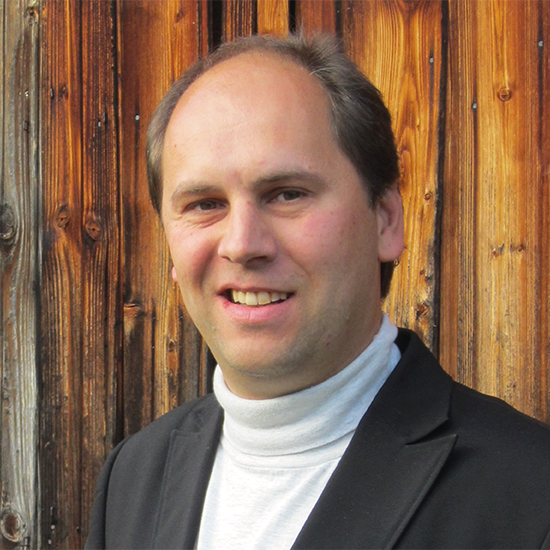
Stefan Bieber

Thomas Letzel
In 2023, The Analytical Scientist celebrated its 10-year anniversary. Following Caroline West’s retrospective looking back on the past 10 years of supercritical fluid chromatography, we couldn’t help but notice that SFC has always been a focus for TAS – going all the way back to Issue 01, both with Caroline’s piece on “Greening SFC” and Terry Berger’s contribution to “The Analytical Entrepreneurs” (his start-up also focused on SFC).
In October later that year, alongside the first Power List, The Analytical Scientist published “Three Gurus of Supercritical Fluid Chromatography,” which discussed SFC’s potential as a true game-changer in chromatographic separation. One of the interviewees, Eric Lesellier, said:
“It is almost impossible to write an exhaustive list of the benefits of SFC systems. All of the classical separation problems are handled, with the exception of water-soluble compounds. It handles interactions through mobile/stationary phase couplings, it allows coupling of columns for higher theoretical plate number, and it provides the natural concentration of the mobile phase for fraction collection. Of all the benefits, I would highlight isomer separation.”
Further, he said: “From a practical point of view, the real challenge for SFC is method development; firstly, because of the many parameters acting on retention and separation, and secondly, because the stationary phase choice is huge, covering all those used in RPLC, NPLC, and HILIC.”
The second interviewee, Davy Guillarme, asked: “What about mass spectrometry? Just like RPLC, SFC can easily be coupled with MS with either electrospray ionization (ESI) or atmospheric-pressure chemical ionization (APCI) sources.”
Interestingly, one year later, 10 scientists in the “Top 40 under 40” Power List (that’s 25 percent, folks!) could be associated with SFC at that time. Notably, Lucie Novakova predicted: “SFC will be a game-changer; we’re already seeing new instrumental platforms and stationary phases. Other instrumental development will follow, chiral stationary phases with smaller particles are already on the way.”
These interesting findings led us to search for further SFC articles on the TAS website. In total, The Analytical Scientist has published 53 articles that include the keyword “SFC.” Over all the years, several scientists published articles discussing the state of SFC within different analytical fields – which we feel is adequate coverage for a media brand that covers the entirety of analytical science. For example, Caroline West featured prominently, with several publications over the years (in 2013, 2016, 2022, and 2023) discussing SFC handling and environmentally friendly performance. More recently, the debate seems to have focused on SFC’s excellent chiral separations, as well as the need for “greener” equipment and more basic education.
We appreciate The Analytical Scientist as an advocate for SFC. Nevertheless, having looked back at the past decade of SFC coverage in The Analytical Scientist (and many other media as well), we feel there is a need for SFC users and developers to reemphasize the technique’s key benefits. SFC is an excellent chromatographic technique, used widely in routine labs and industry, and has excellent hyphenation with electrospray mass spectrometry! It is great to see SFC having become an important technique in certain analytical fields. However, in our perspective, this technique has the potential to change analytics in many other fields, too. With that in mind, we wanted to highlight several additional applications and solutions that SFC can offer laboratories.
First, the unique characteristics of SFC separations allow for the use of combined stationary phases with different retention modes. The selectivity of such stationary phases is not a combination, but a sequential add-on. This “additive” effect can be achieved by connecting different columns or by small partitions with different selectivity in one column. Several method development strategies are already available for very complicated applications.
Second, the usage of zwitterionic or silica or other “HILIC” columns allows for the perfect retention and separation of polar and very polar molecules, such as the new class of “regulated” drinking water molecules (PMT and vPvM), while allowing one to handle water-soluble compounds.
Third, SFC in its function as a (polarity-extended) chromatographic separation technique is highly compatible with the mass spectrometric inlet (e.g. the electrospray ionization source) in which the mobile phase has to be removed and the molecular ions have to be transferred into gas-phase. The sensitivity of ESI in SFC is comparable or sometimes even better than in LC. This significantly expands the applicability of SFC.
Last but not least, given that SFC is an extremely versatile separation technique with broad selectivity, as we just have seen, it is also highly compatible with (high resolution, accurate) mass spectrometry. As a result, SFC is perfectly suitable for screening very complex samples, such as in non-target screening (NTS).
Despite these promising applications, if we’re honest, SFC will not replace LC (nor GC). Nevertheless, SFC remains a valuable alternative in many fields where LC or GC are not up to the task. These are the fields that we, as SFC users, should focus on. This is also true for vendors – to whom we say: “Please do not lose interest in SFC – just because LC sales may be higher [or something else]!”
SFC has gone through so many ups and downs in its long history, and now is the time for perseverance in the SFC community to ensure it takes a sustainable upwards trajectory.
We must prevent a repeat of what Thorsten Teutenberg correctly forecasted in 2016: “It’s clear that good ideas do not always end up in the form of real applications – indeed, this is often true whenever a ‘new’ technology emerges. One good example (or bad example, depending on your perspective) is supercritical fluid chromatography (SFC), which – after its glorious future had been predicted – fell into oblivion for quite some time.”
We must do better!




